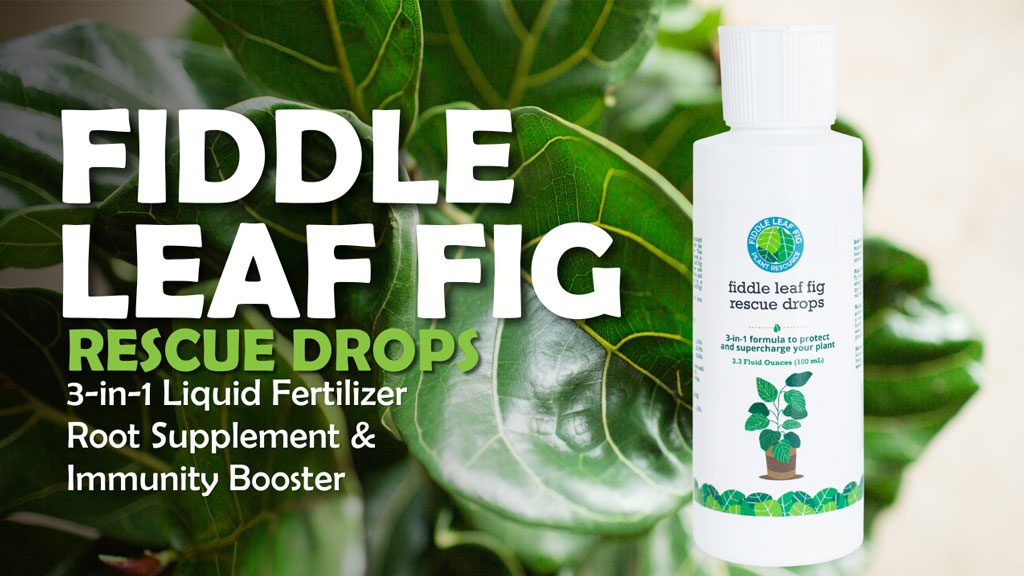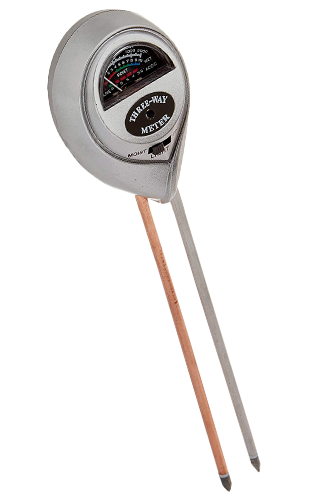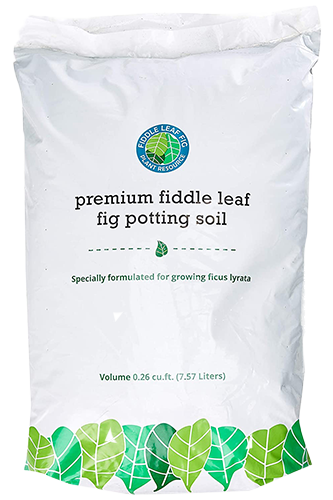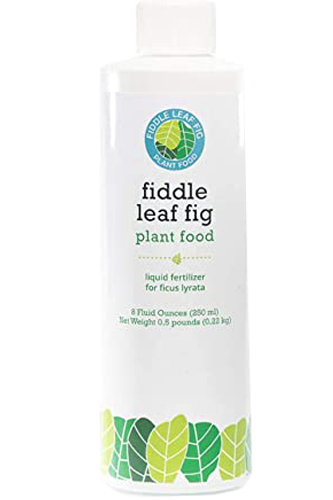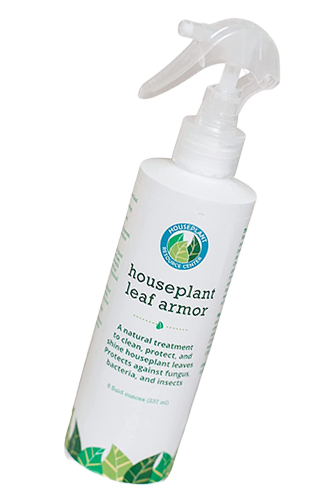Ficus Shivereana is a sensational and staggering magnificence featuring exceptional broad shiny oval leaves with sharp tips. This exquisiteness is visible with variegated foliage with cream, white, and green freckled patterns. It is a half-breed of Ficus Elastica, also commonly known as marble plant, Indian rubber plant, and rubber tree variegata.
The variegated foliage of this stunning houseplant is striking light green with pinky-orange speckles. Every leaf is different from other; hence the speckling and marbling on the leaves represent an exclusive ambiance. The beautiful Indian rubber is a colorful houseplant that adds a unique vibe to any expanse. Its colorful foliage and startling size make a striking statement in the plant collection.
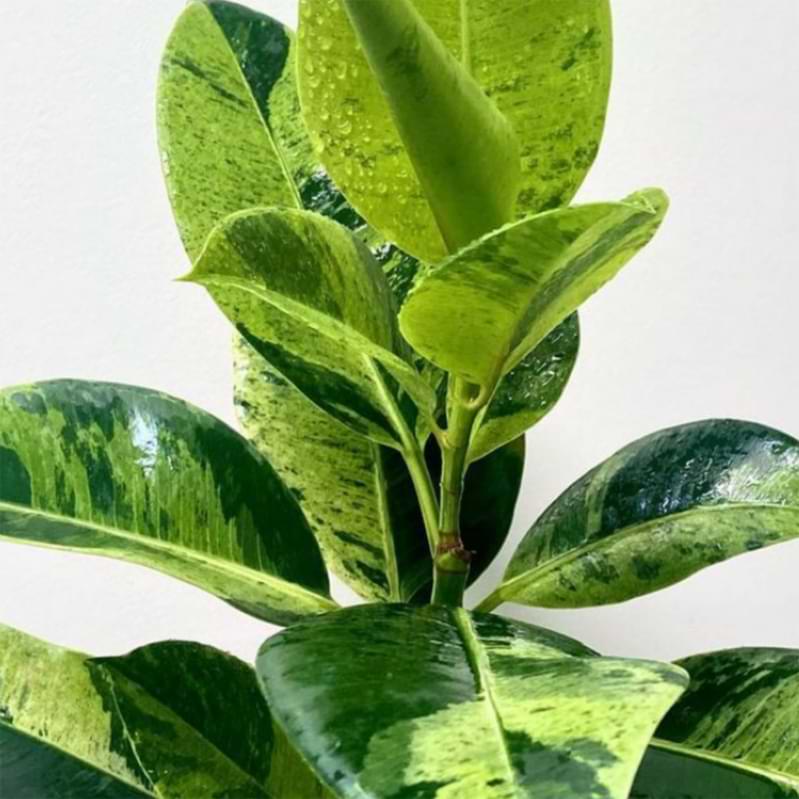
How to care for Ficus Shivereana
Ficus Shivereana is an easy-care houseplant, but it takes some time to adjust to the new environment; therefore, the stunning beauty needs extra love and attention. However, the plant can grow significantly and add a vibrant vibe to any place if provided with the proper conditions.
The Indian rubber needs regular watering to thrive. It appreciates the moist soil but hates soggy medium. The plant does best in the bright indirect sunlight and is happy in the aerated and well-draining soil.
The rubber plant develops into an alluring little tree if it gets the proper care and environment.
| Common Name | Ficus Shivereana, Variegated rubber plant |
| Botanical Name | Ficus Elastica Shivereana |
| Family | Moraceae |
| Origin | Southeast Asia |
| Soil | Well-Drained |
| Humidity | 50% |
| Temperature | 59F-77F |
| Sunlight | Partial sunlight |
| Pests | Mites, Aphids, Scale |
| Diseases | Leaf spot |
Ficus Shivereana Growth
This stunning rubber plant is an evergreen beauty that can reach up to 2 meters indoors. However, it can grow up to 20 meters if planted outdoors. On average, the plant grows nearly 24 inches yearly. The oval-shaped leathery, shiny leaves can go up to 08-12 inches in length and 04-08 inches in width; however, the leaf size and variegation depend on the light the plant receives.
We recommend rotating the plant every 2 to 3 weeks to ensure that the entire plant receives equal light; that also aids the plant in forming an even shape.
Watering
Ficus Shivereana likes and flourishes on water, but only if it is provided with the right amount. Overwatering or underwatering can damage the plant. Therefore, always water according to the soil and weather conditions.
Watering frequency increases in summers, whereas the plant requires less water during the winter. The best practice is to check the plant weekly and inspect if the top layer of the soil is dry. You may verify the moisture level by feeling or using a soil moisture meter for an accurate reading. Weekly checking ensures the plant is only watered when needed, thus avoiding over or under-watering.
The quantity of water depends upon the plant size. As a thumb rule, one cup of water is necessary for each one-foot height of the plant, which means water one cup if your Ficus Shivereana is one foot high, two cups if the plant is two feet in height, and so on.
Light Requirements
The light directly affects the leaf color and quality of the Ficus Shivereana. Therefore, positioning the plant at the optimum place is vital for foliage variegation. Ficus Shivereana prefers indirect, bright sunlight. Although the direct morning light is good for the plant, keeping it away from the direct afternoon sun is necessary as it is too harsh for the delicate leaves.
This Ficus plant can tolerate low lighting conditions; however, constant deficiency of optimum sunlight may cause leaf discoloration and fall.
Therefore, it’s ideal to place it near a south-facing window where it receives bright and medium light throughout the day, encouraging its growth.
Humidity and Temperature
As this plant has originated from a tropical region, it appreciates humidity for its health and evolution. 50% humidity is ideal for Ficus Shivereana, but it’s a relatively hardy plant and can survive in less humid conditions. If the plant is positioned in a dry space or the weather conditions get hard for Ficus, place a humidifier or pebble tray near the plant to provide it with the required humidity levels.
While the ideal temperature range for the Indian rubber plant is between 59° F to 77° F, the plant thrives typically at temperatures on the warmer side.
As it’s a tough plant, it can tolerate minor fluctuations in temperature. It can do sound under varying temperatures, but providing the ideal warmer climate is necessary to keep the plant happily thriving. In the winter, the plant’s surrounding temperature shall not go below 50° F.
Maintenance
Like every other plant, the Ficus Shivereana also needs maintenance and care. The plant pruning is done when it reaches its full growth and potential. Trim the leaves properly with clean pruning shears or scissors to refine the plant’s shape.
The ideal time for pruning is the growing season which is spring and summer. But remember to prune the plant when required because too much pruning can hinder its growth. Hence avoid unnecessary pruning.
Also, give a periodic wipe down with neem oil and apply Houseplant Leaf Shine Spray to enhance the foliage appearance. An occasional shower, removing dirt and pests, can do wonders for your Ficus Shivereana. Water at room temperature is ideal for watering, and the excess water shall not remain in the pot. Showering the Ficus Shivereana is not a great idea if the potting soil is compact.
We recommend rinsing your plant only in the morning and on a sunny day to let the leaves dry entirely and ensure there is no direct sunlight hitting the plant after a bath.
Soil Requirements for Ficus Shivereana
Focuses prefer well-draining soil and benefit from a customized soil mix containing draining and moisture retaining constituents. A correct potting mix is essential for your plant growth and health. We have developed a perfect soil recipe for Ficus plants that will do wonders for your Ficus Shivereana.
The soil PH for the marble plant should be between 6.0 to 6.5 as the more acidic soil will cause the plant to decline.
Drainage plays the most critical role, and plant enthusiasts shouldn’t ignore it. The soil should be well draining and aerated as overwatering may cause irreversible damage to your plant.
A good potting mix also has essential nutrients for your plant’s growth; therefore, use a soil medium rich in nutrients.
Fertilizer
The Ficus can do well without fertilizers, but using little fertilizers can enrich its development, especially during the growing season. Generally, the potting soil has enough nutrients for the plant’s growth, but the nutrients condense with time when the plant grows; for that reason, the Shivereana needs fertilizer.
The best fertilizer for Indian rubber plants is liquid fertilizer, and we have a customized liquid fertilizer formulation to boost the growth of your Ficus plant.
Repotting
The Ficus Shivereana must be repotted every year in the spring as it’s the start of the growing season, and the plant needs fresh nutrients. And what will be the best way to add nutrients to soil other than repotting?
If your plant is ready for repotting, the following steps must be followed to properly transfer it to a new planter.
- The new pot must have drainage holes to encourage extra drainage. Fill the container’s base with Houseplant Smart Gravel; they can also protect the roots from exposure to excessive water.
- Fill the rest of the pot with an appropriate potting mix.
- Ensure that the soil is loose and there is space for oxygen flow, as the roots need oxygen to nurture.
- Now, plant the Ficus Shivereana in the new container and water it.
- To avoid water logging, take a break between watering sessions until the soil dries completely.
Propagating Ficus Shivereana
The Marble plant is native to tropical regions, so it is easy to grow and propagate. You can use the leaf or stem cutting method to propagate this plant. It has a high rate of success through this method.
To propagate the plant, you need a few tools and supplies.
- Sharp pruning scissors or shears
- Protective gloves
- Water
- Bottle
- Pot
- Potting mix
- Plastic bag
- Rooting hormone
Propagation in soil
- Firstly, prepare the surface area where you plan to cut the plant stem or leaf. Wear protective gloves to protect yourself from the plant sap.
- Before cutting, identify the leaf nodes along the stem; the new root grows through these leaf nodes. The cuttings should be 6 inches long and have at least 4 to 5 leaf nodes to attain the best chances of success.
- Once you identify where to take the cuttings, take a sharp scissor and cut it gently.
- After you take the cuttings, remove the bottom leaves and leave one leaf at the top. This helps expose the stem and ensures that the cutting energy is directed to the new growth. Roll the leaf and lock it with a rubber band to reduce moisture loss.
- Plant the cutting in a small plastic pot filled with a soilless potting mix and moisten it thoroughly. Remember to apply the rooting hormone to the cuttings.
- Place a plastic bag on the cutting to lock moisture and create a greenhouse-like environment.
- Position the cutting, including the bag, in a warm location where it gets dappled sunlight. Avoid direct sun as it will burn the leaf. Don’t let the soil dry out; spray it with water regularly.
- After 4 to 5 weeks, the cuttings will start to establish roots.
Propagation through water
- Take the scissors and paper towel. A paper towel is needed to wipe out the toxic sap from the plant.
- Put the scissors at the base of the cutting and gently cut it. Dry out the sap with the help of a paper towel.
- Once you get the cuttings, let it scab for a few hours.
- After a few hours, place the cutting in room temperature filtered water.
- After a few weeks, you will see roots from the stem. When the roots start to develop, plant it in a pot.
- Place the plant in a well-ventilated spot where it gets ample indirect sunlight.
Toxicity: Is the Ficus plant poisonous?
Like other common Ficus plants, the Shivereana is also toxic to humans and pets due to its poisonous sap. This poisonous sap causes dermal and gastrointestinal irritation in your pets. Therefore, keeping your furry friends and kids away from this plant is imperative.
If you notice any symptoms, immediately consult the doctor.
Pests
The Ficus Shivereana is a delicate plant that different pests can bombard. Common pests that can outbreak the plant are spider mites, aphids, and scales. These tiny insects may cause the leaf curling in the Ficus plant.
When you spot curling leaves, inspect the plant, mainly the underside of the leaves. Spray the Shivereana with a soap water mixture or shower it to wipe out all insects. Neem oil is another good solution to this problem.
Diseases
The marble plant is also prone to diseases such as leaf spots and cold injuries.
Leaf spot: When the plant is attacked with leaf spot disease, the leaves start getting yellow and brown spots. Also, leaf spots caused the falling of leaves.
The leaf spot disease may be caused by pest attack and retention of water on leaves for an extended duration. If you see the symptoms, reduce the misting frequency, and prune the affected leaves.
Cold injury: In case of cold injury, brown blotches on mature leaves and young leaves appear distorted, brown, and puckered.
When the plant is exposed to too much cold, it can be attacked by this disease. Therefore, maintain the temperature above 50° F to avoid cold injury to the plant.
Common Problems
Some common problems that this Ficus plant can encounter are;
Overwatering: The plant needs water to nurture, but only when the top soil is dry. The plant is overwatered, especially in cold climates, which can cause many problems, such as leaf discoloration. When you spot the signs of overwatering, stop giving it water until the soil gets dry.
Leaf burn: The Shivereana must get a generous amount of indirect light, but it harms this plant and can cause leaf burn when exposed to direct sunlight. Leaf burn is a severe issue and may kill the plant. Therefore, always keep the plant in indirect bright light.
Dropping leaves: overwatering and cold cause the leaf dropping. If you notice that your plant is shedding leaves, look for the reasons and fix them as soon as possible. Always keep the plant above 50° F and water it only when the top layer of soil is dry.
FAQs
Is Ficus Shivereana a rare plant?
The Ficus Shivereana is a unique and rare variety of the Ficus family. It has light green foliage with pinkish-orange flecks, making it extremely attractive. The plant appreciates the indoor environment and thrives well in balanced, bright indirect sunlight.
How can I make the rubber plant grow faster?
If you want your rubber plant to grow fast, the key is balanced light and water. Your plant will be happy and healthy if you provide the proper moisture and sunshine. If the plant needs lighter water, it will give you hints, so being a caring plant parent, keep an eye on the plant if it displays any changes.
Do rubber plants like bathrooms?
The rubber plant will only be happy in a bathroom where it receives adequate light and humidity in the air. So you can keep your plant there if your bathroom has enough light and humidity.
Should I mist rubber plants?
Since misting increases the humidity, the rubber plants like it as they are native to topics. Therefore, the misting benefits the plant, especially in the warmer atmosphere. Regular misting also helps to prevent mites and other insect attacks; however, do not let the water stay on leaves for longer durations as it can cause fungal diseases.
Ficus Shivereana Wrap Up
Ficus Shivereana is a tremendously gorgeous, rare rubber plant, and thus it needs care, love, and attention. Nevertheless, you can grow this fantastic houseplant both indoors and outdoors.
The beautiful glossy, leathery and shiny leaves are the zenith of the plant that can make any place visually alluring.
If you also want to make a remarkable statement at your home, bring this exquisite beauty home.
Here are some of our most popular resources on fiddle leaf fig care to help you grow the happiest, healthiest, and most beautiful fiddle possible!
The Fiddle Leaf Fig Expert eBook


